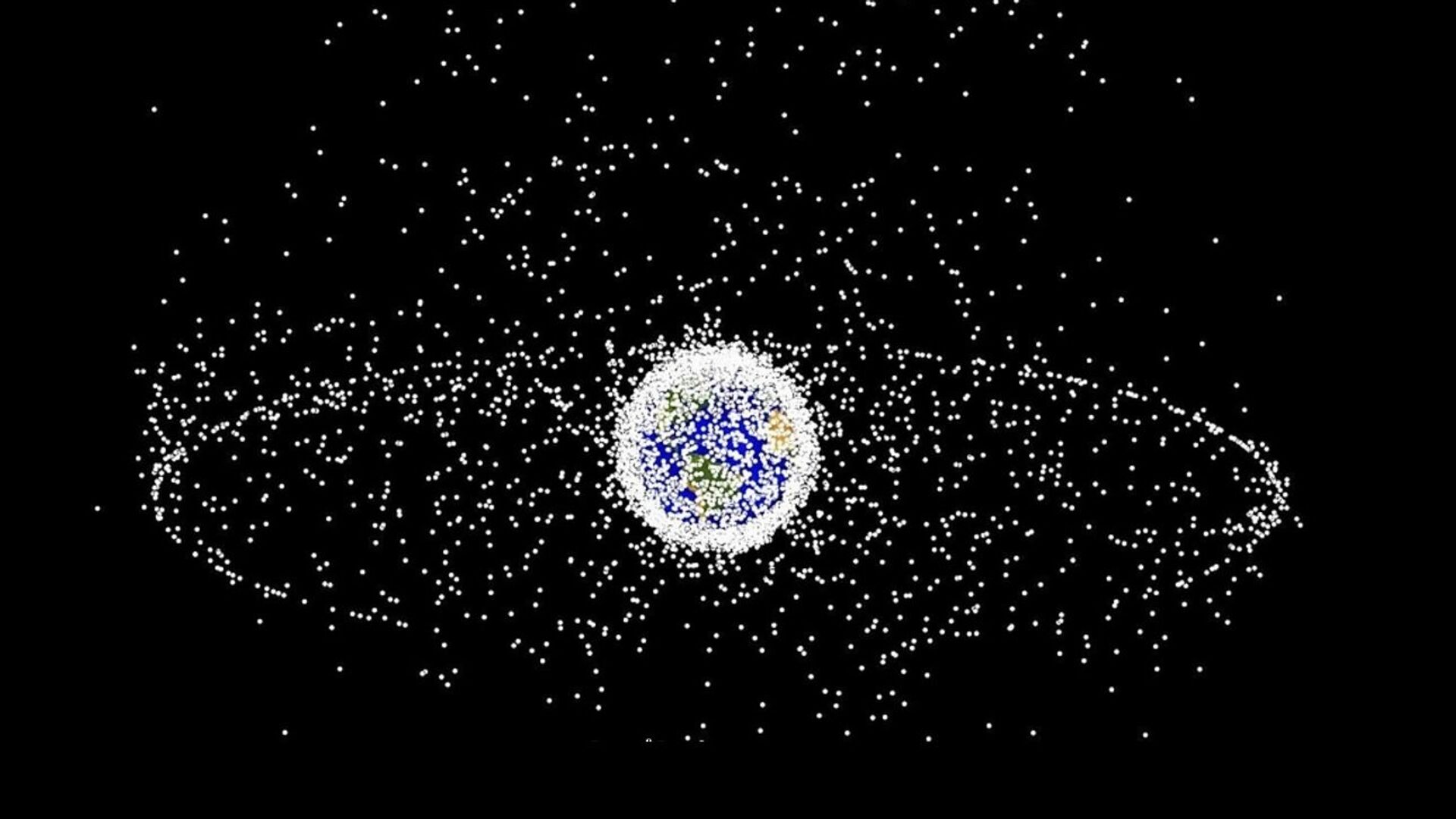https://sputnikglobe.com/20241212/scientists-develop-laws-to-control-a-rotating-space-tether-system-1121154831.html
Scientists Develop Laws to Control a Rotating Space Tether System
Scientists Develop Laws to Control a Rotating Space Tether System
Sputnik International
A Chinese-Russian scientific team, involving researchers from Northwestern Polytechnical University in Xi'an (China) and Samara University (Russia), has developed a mathematical model for efficiently managing a group of satellites connected by tethers.
2024-12-12T14:01+0000
2024-12-12T14:01+0000
2024-12-12T14:01+0000
beyond politics
russia
samara
china
space
https://cdn1.img.sputnikglobe.com/img/105275/13/1052751325_0:40:1292:767_1920x0_80_0_0_4de1cdc53269f50ab873c683a31a795f.jpg
A Chinese-Russian scientific team, involving researchers from Northwestern Polytechnical University in Xi'an (China) and Samara University (Russia), has developed a mathematical model for efficiently managing a group of satellites connected by tethers.According to the authors, the model enables effective control of the satellite system. The results were published in Acta Astronautica.A rotating space tether system consists of two spacecraft connected by a long, thin, and strong tether—often tens of kilometers in length—functioning as a "space sling" while its center of mass follows a predefined orbit. Typically, this system comprises a large main satellite and a smaller subsatellite, explained researchers at the Samara National Research University named after academician S.P. Korolev (Samara University).Such tether systems are used in space to perform tasks that are impractical, inefficient, or uneconomical with existing space technologies. Their applications include generating artificial gravity, forming satellite constellations, and deploying satellites into specific orbits. Recently, significant attention has been directed toward using tether systems as "space janitors" to clean orbital debris.Pavel Fadeenkov, an associate professor from the Department of Flight Dynamics and Control Systems at Samara University, together with Chinese colleagues led by Professor Wang Changqing of the Institute of Automation at Northwestern Polytechnical University in Xi'an, has created a mathematical model for controlling low-thrust engines on spacecraft. This system allows the rotation plane of the tether system to be adjusted by significant angles.According to the researchers, the equations of motion in the rotating coordinate system were derived using the Lagrangian formalism."The main advantage is that the new model provides analytical control laws for electric motors to initiate system rotation and counteract disturbances. This will accelerate the creation of a real space system," said Fadeenkov.He added that the team studied the motion of a satellite pair with masses of 1,600 kg and 60 kg connected by a 3-kilometer tether, orbiting at an altitude of 500 kilometers. The rotation plane of the system can be changed by 90 degrees using electric propulsion engines with a maximum thrust of two newtons. The scientists found that the control system can achieve orientation accuracy of less than one-thousandth of a radian (under 0.05 degrees).According to the university, applying the mathematical model opens up opportunities for exploring numerous problems related to the spatial rotational motion of various bodies.In the future, the researchers plan to develop a real space system capable of removing orbital debris in desired directions.
russia
samara
china
Sputnik International
feedback@sputniknews.com
+74956456601
MIA „Rossiya Segodnya“
2024
Sputnik International
feedback@sputniknews.com
+74956456601
MIA „Rossiya Segodnya“
News
en_EN
Sputnik International
feedback@sputniknews.com
+74956456601
MIA „Rossiya Segodnya“
Sputnik International
feedback@sputniknews.com
+74956456601
MIA „Rossiya Segodnya“
russian scientists, rotating space tether system
russian scientists, rotating space tether system
Scientists Develop Laws to Control a Rotating Space Tether System
A rotating space tether system consists of two spacecraft connected by a long, thin, and strong tether—often tens of kilometers in length—functioning as a "space sling" while its center of mass follows a predefined orbit. Such systems are used to perform tasks that are impractical, inefficient, or uneconomical with existing technologies.
A Chinese-Russian scientific team, involving researchers from Northwestern Polytechnical University in Xi'an (China) and Samara University (Russia), has developed a mathematical model for efficiently managing a group of satellites connected by tethers.
According to the authors, the model enables effective control of the satellite system. The results were
published in
Acta Astronautica.
A rotating space tether system consists of two spacecraft connected by a long, thin, and strong tether—often tens of kilometers in length—functioning as a "space sling" while its center of mass follows a predefined orbit. Typically, this system comprises a large main satellite and a smaller subsatellite, explained researchers at the Samara National Research University named after academician S.P. Korolev (Samara University).
Such tether systems are used in space to perform tasks that are impractical, inefficient, or uneconomical with existing space technologies. Their applications include generating artificial gravity, forming satellite constellations, and deploying satellites into specific orbits. Recently, significant attention has been directed toward using tether systems as "space janitors" to clean orbital debris.
Pavel Fadeenkov, an associate professor from the Department of Flight Dynamics and Control Systems at Samara University, together with Chinese colleagues led by Professor Wang Changqing of the Institute of Automation at Northwestern Polytechnical University in Xi'an, has created a mathematical model for controlling low-thrust engines on spacecraft. This system allows the rotation plane of the tether system to be adjusted by significant angles.
According to the researchers, the equations of motion in the rotating coordinate system were derived using the Lagrangian formalism.
"The main advantage is that the new model provides analytical control laws for electric motors to initiate system rotation and counteract disturbances. This will accelerate the creation of a real space system," said Fadeenkov.
He added that the team studied the motion of a satellite pair with masses of 1,600 kg and 60 kg connected by a 3-kilometer tether, orbiting at an altitude of 500 kilometers. The rotation plane of the system can be changed by 90 degrees using electric propulsion engines with a maximum thrust of two newtons. The scientists found that the control system can achieve orientation accuracy of less than one-thousandth of a radian (under 0.05 degrees).
According to the university, applying the mathematical model opens up opportunities for exploring numerous problems related to the spatial rotational motion of various bodies.
In the future, the researchers plan to develop a real space system capable of removing orbital debris in desired directions.


